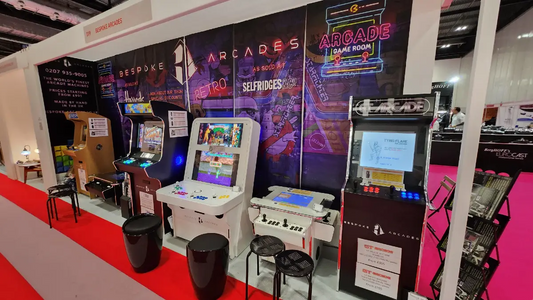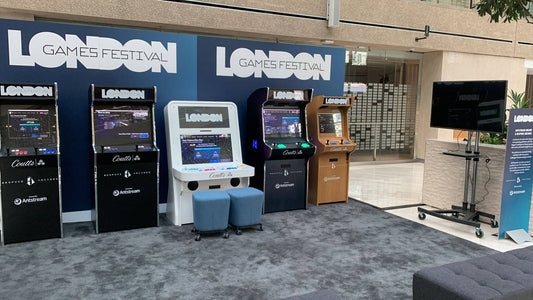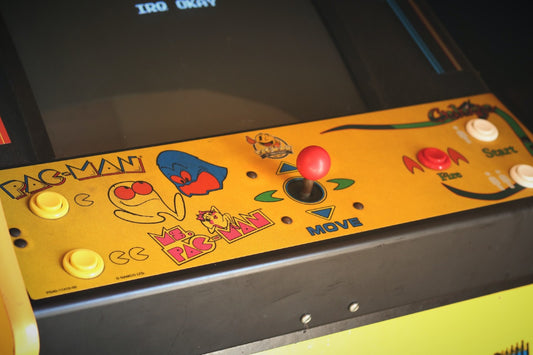Space Panic, Rally X & Battlezone
Space Panic (1980)
Space Panic is often alluded to as the first platform game, as it predates more successful titles such as Donkey Kong (1981). As well as being the first platform game, it has many other original aspects. The main character would dig holes in the platforms to lure in aliens, after which, the player could hit the alien to knock it out of the hole – which made it appear off-screen. However, there was the option in later levels where two (or more) holes could have been lined up; This created a new method in which to dispose of aliens. To add to this, there was also a limited supply of oxygen within the game play.
Created by Universal Entertainment Company, the game was considered unsuccessful upon release. Although, this is thought to be due to the overly-new concept of game play; which made it difficult for the player to pick-up on the concept fast enough to survive in the game.
Rally X (1980)
Rally X was the first game in the maze-genre, developed by Namco, and also boasted the title of the first Namco game to feature bonus rounds. The reception to the game was expected to be very welcoming, critics at the Amusement Machine Operators of America show (1980) expecting the game to be the top money-earner of the year. Even though this game was pitched against classic games such as Pac-Man and Defender, which both went on to be named as two of the greatest games to appear from the golden age of video games (Pac-man becoming the highest-grossing video game of all time).
The aim of Rally X was to capture 10 flags that appear in a maze, all the while several cars would chase the player to hinder the collection of the flags. These enemy cars could be stopped temporarily by using the ‘smokescreen’, however using this feature would have run down the fuel gauge on the player’s car. Additionally, a flashing special flag was available and, if caught, gave the player a double bonus.
Each flag was worth a different amount, adding 100 points every time. For example, the first flag caught was worth 100 points, the second would be worth 200 points and so on. With the double bonus each flag was worth double its allocated points. Though, if the character was to die in the game, the double bonus, obtained by the special flag, is over-written and the allocated flag points system is restarted (the first flag after re-spawn was worth 100 points…).
The previously mentioned Bonus Stage appeared on the third round, and every fourth after that. Here, players would collect flags except now the enemy cars are unable to move unless the player would run out of fuel. Furthermore, if the player hit a rock in the ‘challenging stage’, the bonus round would end but the player would not lose a life.
Battlezone (1980)
Atari’s Battlezone was first-person tank combat game, which was later enhanced for US Army military training, and used vector graphics. The game was set in a valley that is enclosed by mountains; where the player controlled a tank with the aim of the game being to destroy as may enemy tanks, missiles and UFOs as possible without being hit by return fire.
The player was provided with a radar screen which showed the current position of any enemy tanks and missiles within range, and occasionally UFOs. The opponent’s tanks appeared in two differing variations, the slow tank and the super tank. Once the targets of these tanks had been hit, the player would receive 1,000 points for the slower tank and 3,000 points for the fast-moving super tank.
Furthermore, through hitting a missile the player would have obtained 2,000 points. The tanks and missiles in Battlezone could result in the loss of one of the player’s tanks in one hit. Whereas, a flying saucer posed no threat to the player; although, if hit, could gain the player a bonus of 5,000 points. To add an advanced level of difficulty to the game, only one shot was allowed on the screen at any time, making the accuracy of any shot crucial to the player’s chances of survival.
Due to the technological advancements of this game, the army approached Atari to develop a similar battle simulating system. Although the designer (Ed Rotberg) initially opposed this, due to not wanting to work with the military, the Bradley Trainer was created to educate training army gunners on the Bradley Fighting Vehicle.
If, like us, you love these retro titles and wish to play them all in magnificent new glory, you NEED to check out our range of custom arcade machines.



